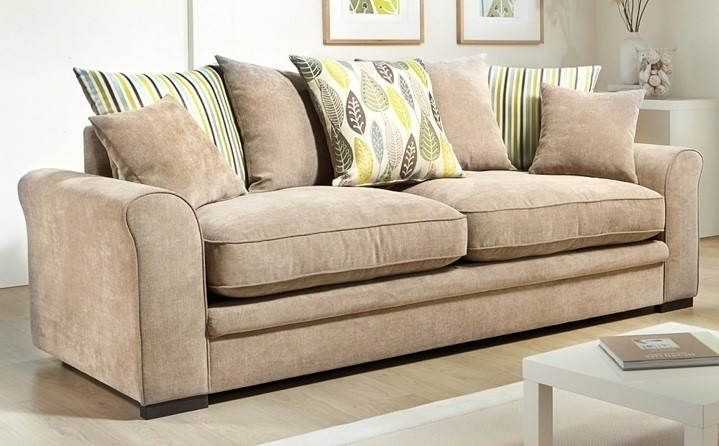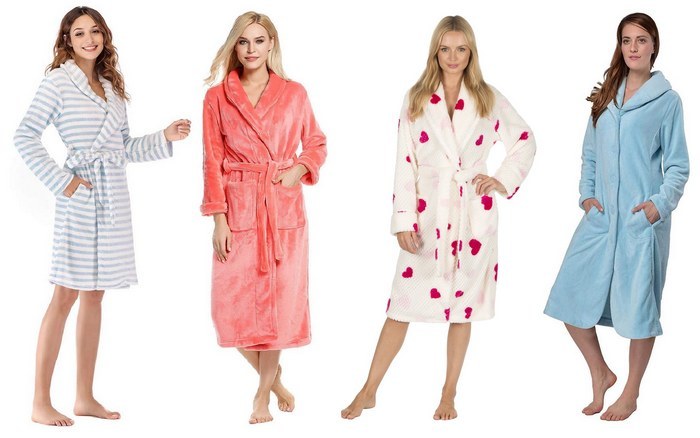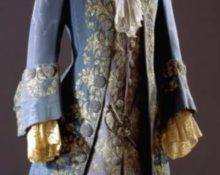The industry, including textiles, does not stand still. If previously synthetic fabric was considered a low-grade imitation of natural material, today such a statement can be safely refuted.
Let's take microfiber for example. This hypoallergenic, high-quality synthetic material that is incredibly durable and perfectly absorbs moisture. In terms of its “technical characteristics”, this fabric is not only not inferior, but in some respects it is ahead of natural fabrics.
Description of material
The invention of microfiber belongs to the Japanese. In the 70s of the last century, this material from the scientific laboratories of Asian scientists went into mass production. Since then, its popularity has been growing steadily: Today microfiber is one of the most common synthetic fabrics.

Microfiber composition
The second, also familiar to us, name of this material is microfiber. It is no coincidence.The fabric is based on the finest polymer threads (polyester and polyamide), intertwined with each other. They form the same ultra-strong and resistant to any environmental factors microfiber.
In addition, microfiber includes:
- natural cotton threads;
- viscose or cellulose.
By the way! Microfiber is truly unique. It is 100 times thinner than a human hair. However, it is incredibly strong.
Characteristics and properties
This fabric is a real find for thrifty housewives who care about the health of their family. For example, microfiber is considered one of the most wear-resistant materials (with proper use, a thing made from it can last up to 5 years). It is light, but at the same time dense (it will be difficult even for an adult to tear it apart).
Microfiber No worries about multiple washes. It does not shrink, does not lose color and does not stretch. In a word, he endures any hardships of everyday life.
The material perfectly absorbs moisture. For example, a wet rag from it will collect water from a varnished table and will not leave streaks. In addition, microfiber is soft and will not scratch glass, mirrors and other glossy surfaces.
Fabric a little looks unusual. It is almost lint-free and does not have any odor. Also, the positive characteristics of microfiber include:
- antifungal effect (the fabric not only cleans well, but also prevents microorganisms from multiplying on its surface);
- electrostaticity (thanks to this, microfiber perfectly removes dust from furniture, but this nuance is in some cases a minus, for example, if bed linen is sewn from microfiber);
- environmentally friendly (safe even for children’s bodies).

How is it different from others?
Microfiber is a kind of fabric.It is not like other materials. Differences both in structure and production methods, and in appearance.
Let's take polyester as an example.. Like microfiber, it is a synthetic material. It is produced from petroleum products using high temperatures. Polyester does not wrinkle and has a long service life. Nevertheless, there are significant differences between it and microfiber. So, polyester threads are thicker and rougher to the touch. This material does not allow water and air to pass through well. It perfectly protects from bad weather (wind, rain), but does not warm as well as microfiber.
Important! Microfiber is much more expensive than polyester. Therefore, the price tag for clothes made from it is higher.
Fleece is another artificial material.. It is soft, retains heat well, and feels like cashmere. Like microfiber, it allows air to pass through perfectly and does not wrinkle. But it is completely unsuitable for cleaning, as it quickly collects the slightest dirt and dust.
Calico is a popular fabric. Bed linen made from this completely natural material is in demand. The same cannot be said about microfiber. Bed linen made from it accumulates static electricity, and small puffs often appear on it (although they buy it no less often than calico).
As you know, microfiber cleaning cloths are very popular. Only their suede “colleagues” can compete with them. However, there are also differences between these materials. Suede – natural fabric, which has a porous structure and different pile thicknesses. This material is good at removing dirt and stains on glass and mirrors, while microfiber is suitable for cleaning furniture.
By the way! These materials are sometimes so similar that the average person uninitiated in the intricacies of manufacturing will have difficulty finding the differences.The main difference is the presence of the characteristic odor of suede (the aroma of natural leather). As noted above, microfiber has virtually no odor.
Of course, each material is good in its own right. Sometimes it is completely impossible to compare them. Each of the ones we present has its own advantages and disadvantages. The pros and cons of microfiber will be discussed below.

Advantages
Among the main advantages are the following:
- does not fade, the color always lasts long and well;
- clothes made from this fabric do not deform during wear: they do not shrink or stretch;
- allows air to pass through well, the skin literally “breathes”;
- does not require special care;
- absorbs any liquid well, so you won’t be able to sweat under such a blanket (it will be pleasantly warm under it);
- “does not collect” dust and small debris (hair, feathers from pillows);
- There is no pilling on this fabric.
Flaws
There are few cons. This fabric cannot tolerate high temperatures. Can cause allergic reactions (although this statement is more theoretical, in practice this happens extremely rarely). Significant disadvantage - price microfiber. Its production requires high-tech equipment. Therefore, the price of clothes made from it is also quite high.

Types of microfiber
Different fibers are used for production. That’s why there are several types of microfiber: modal, tactel, meryl:
- Modal is a fiber based on bamboo cellulose. Wear-resistant, soft and dense fabric that feels like silk. This material is used for sewing bed linen. Unlike cotton, it does not wrinkle, does not lose color even after a large number of washes, and it is not hot to sleep on a Micro Modal sheet.
- Tactel - this fabric appeared in 1983 in the USA. It is based on polyamide fibers.Clothes made from such microfiber will create a “second skin” effect and are truly comfortable. Micro Tactel is a thin material, these fibers are used to create delicate knitwear, such as T-shirts or thermal underwear.
- Meryl is the most expensive type of microfiber. During the manufacturing process, polyamide threads are treated with silver ions. Thanks to this, Micro Meryl can be safely called a material with antiseptic properties. Even underwear is sewn from this fabric, which does not stretch, does not wash out and provides freshness to the skin throughout the day.
What is used in sewing?
Microfiber is incredibly popular. It is used to make both household items and clothing.
For example, as everyday things, making life more pleasant and convenient, they sew from this material:
- bed dress. Plaids and blankets are especially popular. It is not hot under them in summer and not cold in winter;
- furniture covers. This fabric does not wear out, resembles natural suede in appearance, and is easy to clean. Microfiber is used for upholstery of chairs, sofas, poufs;
- rags for cleaning. The fabric removes dirt and dust and polishes. It's better than regular napkins made from scraps of old clothes or other materials. Microfiber attracts dust, so surfaces in your home stay clean longer.

Microfiber clothing – this is, first of all, underwear, sportswear, tights. Particularly important is the fact that products made from this fabric do not change shape during wear, which means they do not need a lining.
The most popular:
- T-shirts and tank tops;
- underwear;
- thin tracksuits;
- long johns and thermal underwear.
It’s worth mentioning separately about tights. Microfiber is not the only material included in their composition. However, thanks to her tights become more durable, soft and velvety to the touch.
Important! Shoes are made from microfiber. For example, the well-known UGG boots. Externally, the material resembles suede. At the same time, in such shoes your feet are not cold, they do not sweat.

The nuances of washing and cleaning
No matter how wear-resistant this material is, manufacturers advise following certain rules when caring for it. It is recommended to wash such items only on a delicate cycle.. In particular, it is important to pay attention to the following points:
- water temperature does not exceed 40 degrees;
- no need to select a high speed spin (ideally, the water should drain naturally);
- When washing, it is better to turn things inside out, fasten buttons, snaps and zippers, check pockets for debris and sharp objects (pins, bobby pins);
- Do not use aggressive washing or bleaching agents and rinse conditioners;
- Do not dry items in a machine.
Microfiber items cannot be ironed. The material does not tolerate high temperatures. The product may become damaged. The exception is bed linen (it can be ironed at a temperature of no more than 100 degrees, but as carefully as possible). Considering that this fabric practically does not wrinkle, then prohibiting ironing is not a problem. By the way, for the same reason Do not dry such products on a hot radiator or near a heater.
Important! Air conditioning is contraindicated for microfiber. It is not recommended to dry such items in rooms with the appliance turned on.
Things made from this miracle fiber will serve faithfully for a long time, especially if you take care of them correctly. You should not refuse such products because of their, at first glance, high cost. The price will definitely be worth it.Comfort is ensured throughout the entire period of operation.


 0
0





